Should work now.
-
in Film & TV
-
What happens when one photographer breaks the rules, runs out in front of everyone else?
USA Today photographer Jack Gruber, from SportsShooter.com:
Security and officials realized they had no plan and had lost all control. At this point, it was ugly. AP staff photographer Marcio Sanchez had his credentials ripped from his neck. Others were physically pushed. It was something right out of the “how not to handle things” manual.Watching the tournament media director (Pete Simon) running around the court wildly chasing television away from impromptu interviews with players and ripping credentials from photographers necks while stadium security guarded invisible no access lines all seemed too insane to be true.
Here.
-
Photographer David Burnett, from SportsShooter.com:
Sadly, with so much photographic talent in one place (or more correctly, several places) that we photographers must necessarily take a back seat to lousy TV, well, it’s beyond stupid, and beyond tragic.
Here.
-
USA Today photographer Robert Hanashiro, from SportsShooter.com:
“Remember to stay out of the way of the crew and for GOD’S SAKE, stay out of sight! If the producer or director sees your ass on one of the monitors everyone’s outta here,” a voice from a show rep says into his ear. “But do your work and try not to worry too much about getting tossed … if it happens, it happens.”
Here.
-

the glossy black iTalkPro now boasts twin internal microphones for recording in CD-quality stereo, taking advantage of the 5G iPod’s superior stereo and monaural sampling modes, and a bold red recording light around its one-touch recording button. It also features a unique on-screen gain adjustment menu and a bottom-mounted port for an external microphone of your choice.
Here.
in Equipment
-
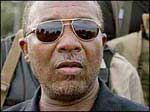
“He was wearing a white flowing robe,” said Babagana Alhaji Kata.
“He passed through immigration but when he reached customs they were suspicious and they insisted on searching the jeep, where they found a large amount of US dollars.
“After a further search they discovered he was Charles Taylor.”
Here.
in News
-
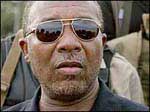
Liberia’s ex-President Charles Taylor, wanted on war crimes charges, has disappeared from the villa where he lived in exile, Nigeria says.
All of those supposed to have been guarding him have been arrested.
Here.
in News
-
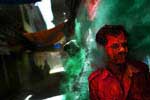
 From the National Press Photographers Association:
From the National Press Photographers Association:“This is an extraordinary photographer,” judge Ruth Fremson of The New York Times said after the panel picked Guttenfelder’s portfolio for First place. “There is a beautiful eye, someone who can handle any kind of news situation, including a helicopter crashing practically at his feet. This photographer has a wonderful sense of color and composition. There is a narrative thread through all the stories. This portfolio has everything you would ask for in a single image and a photo story.”
Here.
in Contests
-
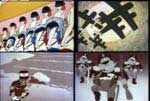
From 1924 to perestroika the USSR produced more than 4 dozen animated propaganda films. They weren’t for export. Their target was the new nation and their goal was to win over the hearts and minds of the Soviet people. Anti American, Anti Capitalist, Anti Fascist, some of these films are as artistically beautiful as the great political posters made after the 1917 revolution. A unique series. With a unique perspective. Includes commentary by a leading Soviet film scholar.
Here.
in Film & TV
-
From the Duluth News Tribune:
But when News Tribune photographer Amanda Odeski tried to enter the DECC on Thursday night to take pictures to accompany reporter Sarah Henning’s concert review, she got stopped.
Rob Thomas’ California-based managers, Lippman Entertainment, demanded Odeski sign a form transferring ownership to them of any photos she would take. We could run them in the paper once. But “all images will hereby become the property of Lippman Entertainment,” the form said. “It is further agreed that no images will be used in any manner known or unknown without written management approval.”
That’s not how we do business, and Odeski didn’t sign. She did the right thing.
Here.
-
From the Washington Post:
The unwitting end of the hunt comes at a time when al-Qaeda sympathizers like Irhabi 007 are making explosive new use of the Internet. Countless Web sites and password-protected forums — most of which have sprung up in the last several years — now cater to would-be jihadists like Irhabi 007. The terrorists who congregate in those cybercommunities are rapidly becoming skilled in hacking, programming, executing online attacks and mastering digital and media design — and Irhabi was a master of all those arts.
Here.
in News
-
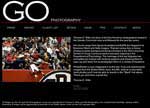
 From SportsShooter.com, Thomas E. Witte on building a website for the professional photographer:
From SportsShooter.com, Thomas E. Witte on building a website for the professional photographer:If you set a pile of Lincoln Logs down in front of a 5-year-old they’ll eventually figure out how to make a house out of them. Likewise, two weeks after plopping a $900 design program in to my computer, I eventually created a rudimentary frames based site that while designed so-so, had major flaws in terms of advertising myself.
Here.
in Photography
-
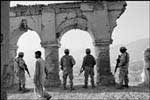
 From Magnum Photos, Abbas portfolio from Afghanistan
From Magnum Photos, Abbas portfolio from Afghanistan
Today in Afghanistan, girls go to school and to the university; the burqah is not compulsory for women who can walk the streets unaccompanied; they are not executed in public for adultery; men are not whipped for not sporting a fist-long beard. The influx of UN and NGO’s money have brought a certain prosperity to the cities which are patrolled by national as well as NATO forces. Presidential and parliamentary elections have taken place. But democracy is not an off-the-shelf commodity which can be purchased in a supermarket and applied to a country with centuries of feudal traditions. Democracy works better when preceded by a secular tradition..Here.
-
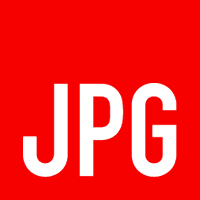
We’re the great in between: not quite amateur, not quite professional. Some do it for art, some as a kind of visual journal, some because they want to become a professional one day, and some just because we have to. It’s just what we do.
Here.
Submissions for the next issue will follow the theme “Oops!”
in Books
-
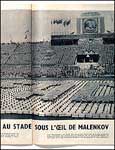
In photojournalism, the subject is considered more important than the aesthetics of the image. While clarity, composition and exposure have always been taken into account, it is news value that drives the profession. But in the 1980’s and 90’s, photographers like James Nachtwey and Gilles Peress established distinct visual styles in their coverage of war-torn regions like Bosnia and Chechnya; the way they observed their subjects, discerned in what they chose to shoot and where they stood, added new layers of information to the editorial image.
Here.
-
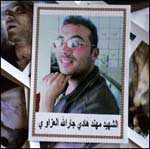
“If the Americans leave, we are finished,” said Hassan al-Azawi, whose brother was taken from the pet shop.
He thought for a moment more.
“We may be finished already.”
Here.
in War
-

 From the New York Times:
From the New York Times:
I recently met a Sunni man who used to be virulently anti-American. He showed me postmortem pictures of his younger brother, who had been kidnapped by death squads and had holes drilled in his face.“Even the Americans wouldn’t do this,” he said.
Here.
in War
-
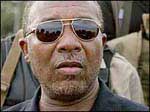
Mr Taylor is accused of selling diamonds and buying weapons for Sierra Leone’s Revolutionary United Front rebels, who were notorious for hacking off the hands and legs of civilians during a 10-year war.
Here.
in News
-
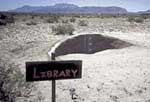
“My favorite reaction we get now and again is: ‘Why in the world would somebody do that? Why in God’s name would you do that?’ People are stunned that we would drive out to the desert to build a library or put a park in a parking space. I love that reaction. My response to that is: ‘Exactly.’”
Here.
in Pranks
-

Photographer Robert Knoth and reporter Antoinette de Jong have documented the impact of nuclear radiation in these four regions since Spring 1999. A book of their work, Certificate No. 00358/Nuclear Devastation in Belarus, Kazakhstan, Ukraine, the Urals and Siberia is to be published on April 18, 2006
Here.








